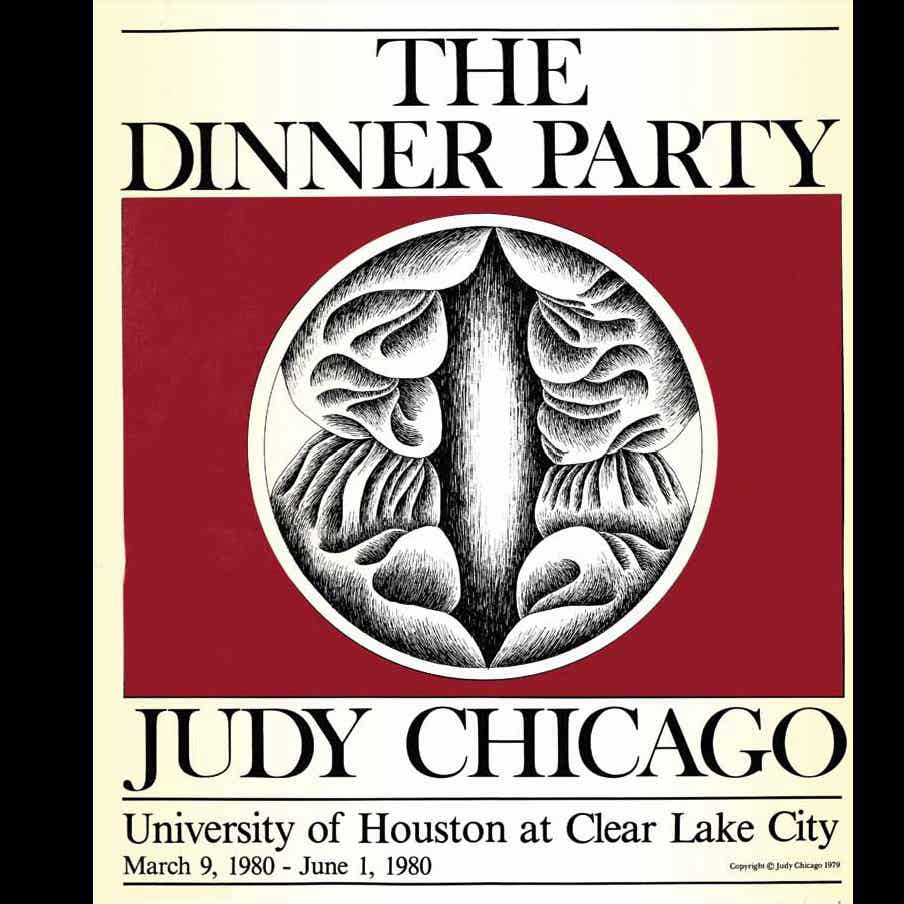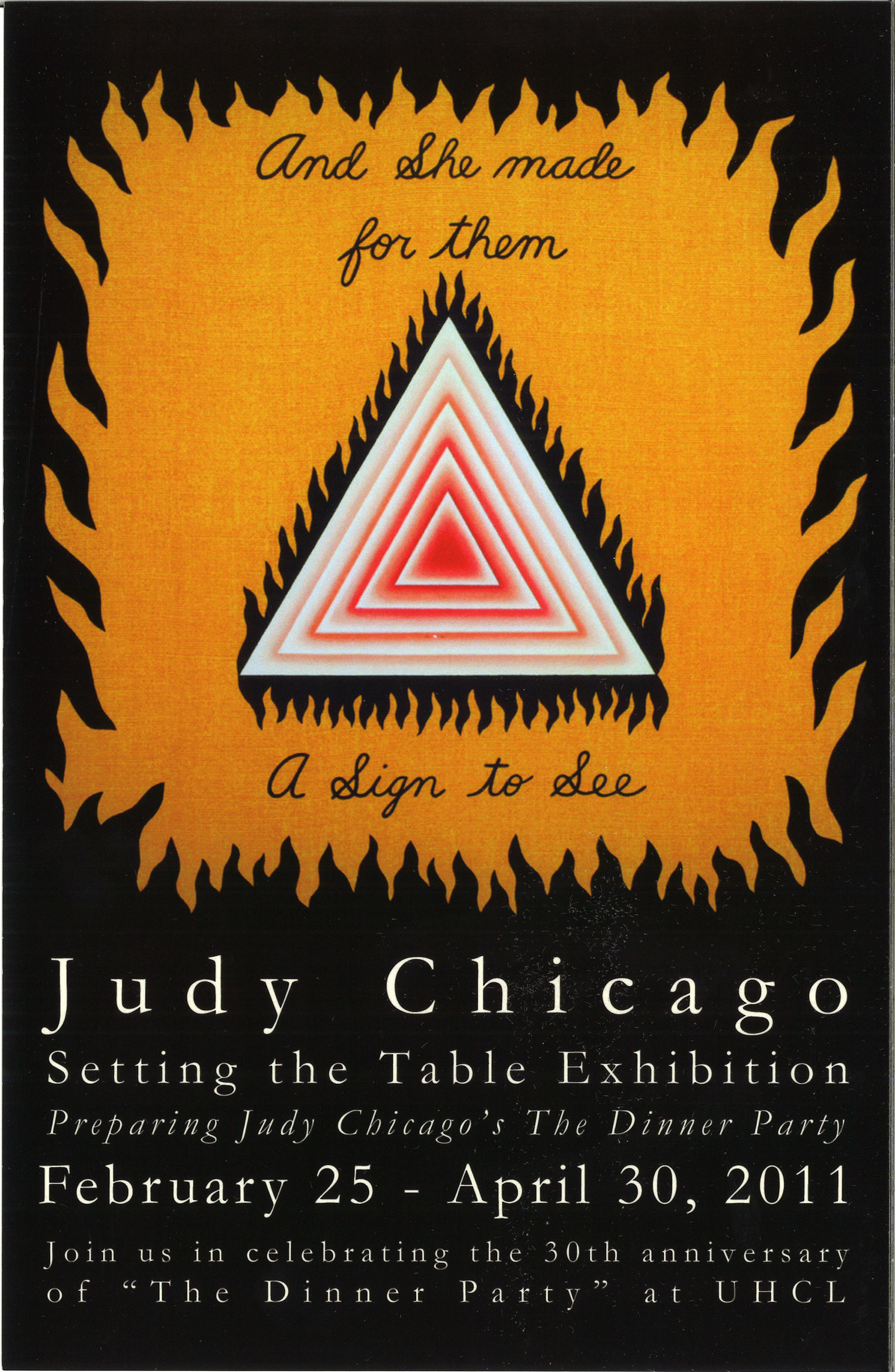Close up of one setting. Photo courtesy of Lindsey Humphrey.
The Dinner Party. Photo courtesy of Lindsey Humphrey.
Close up of one setting. Photo courtesy of Lindsey Humphrey.

Original promotional material. Photo courtesy of UHCL.
Close up of one setting. Photo courtesy of Lindsey Humphrey.
Entrance to the permanent exhibition. Photo courtesy of Lindsey Humphrey.
Close up of one setting. Photo courtesy of Lindsey Humphrey.
Close up of one tile. Photo courtesy of Lindsey Humphrey.
Close up of one setting. Photo courtesy of Lindsey Humphrey.

30th Anniversary. Photo courtesy of UHCL.
What is "The Dinner Party?"
This massive and collaborative artwork conceived by feminist artist Judy Chicago took the concept of hosting a dinner party, a traditional woman's task, and brought it to life with a fresh outlook. Divided across three sides (making a triangle), 39 place settings each honor a woman in history.
Why is "The Dinner Party" special?
This was created during the peak 2nd-wave feminism movement. Through-out art history the female form has been depicted through primarily a male perspective with very, very few exceptions until Chicago's "The Dinner Party."
The work shocked the public then and many even today for it's depictions of vulvas.
In addition to the imagery depicted on the plates, the media used to make the table settings, like embroidery and fiber arts, were seen as distinctly feminine. Instead of avoiding this to be taken seriously in a male-dominated field, Chicago leaned in and showed how these media were often stigmatized as "crafts" held value in professional art spaces.
Where is it now?
The work found its current and permanent home at The Brooklyn Museum in New York City.
How does this work connect to Houston, or even UHCL?
In the spring of 1980, thanks to the work of Houston bookseller MaryRoss Taylor and then Dean of HSH Calvin Cannon, the University of Houston-Clear Lake became the second place to exhibit this ground-breaking work.
Posters for the original exhibition can still be found through-out campus in places like the ceramics room. Additionally, "Birth Trinity," a quilt designed by Chicago as part of her "Birth Project," are featured in on the second floor of the Bayou Building as part of the university's permanent art collection.